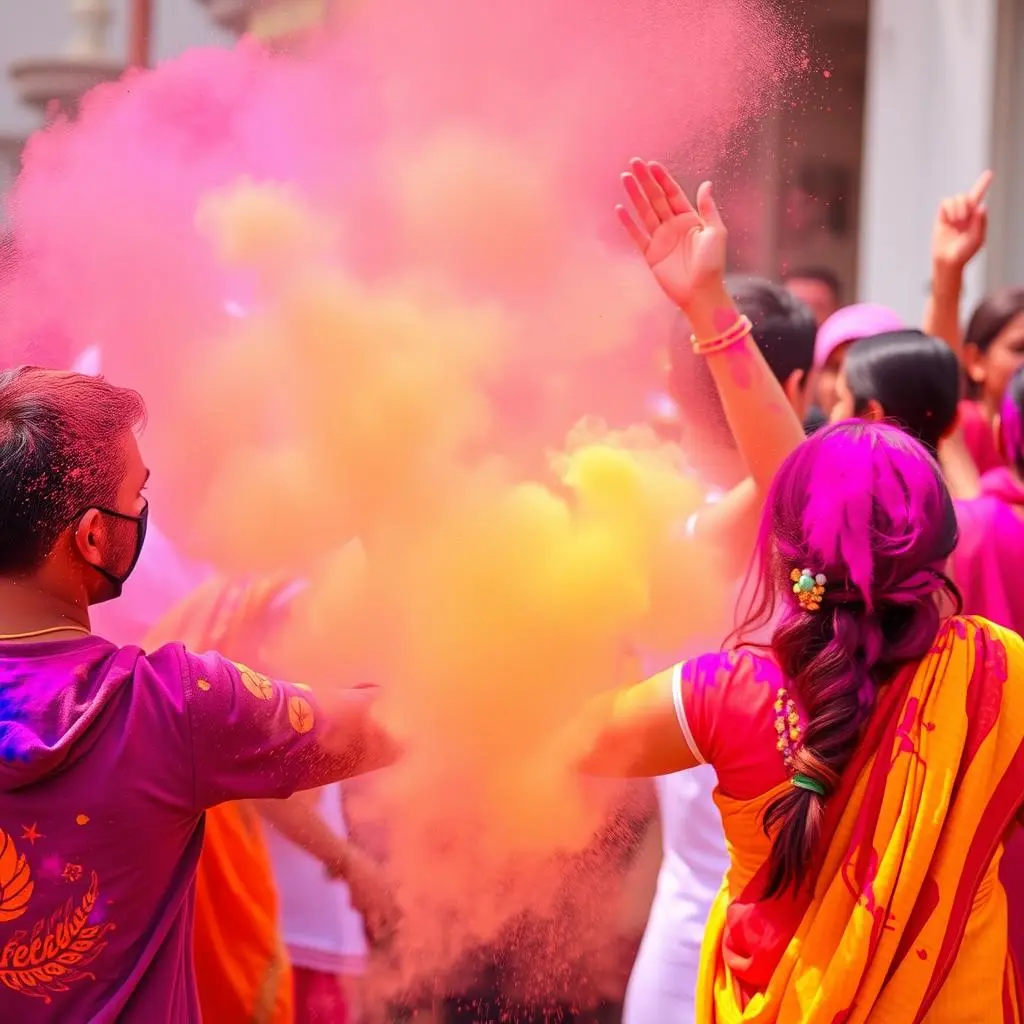
Every country has its history, its heritage, and of course, its celebrations. Holi, often called the Festival of Colors or the Spring Festival, is one of the most colorful and joyful festivals in India. It is celebrated in several other countries with an Indian diaspora. It is celebrated in March, on the day of the full moon, and symbolizes the victory of good over evil, the beginning of spring, and a festival of friendship, love, and unity.
Holi Mythology and Legends
According to Indian mythology, one of the main myths of Holi is related to the victory of the god Vishnu over the demon Hiranyakashipu. Hiranyakashipu was a powerful demon who tried to destroy everything associated with the god Vishnu. His sister Holika, immortal in fire, was used in the plan to destroy the devotee. However, due to the intervention of Vishnu, Holika was burned to death, and the devotee remained unharmed. This victory symbolizes the triumph of good over evil.
This festival is also associated with the god Krishna and his beloved Radha. In one story, Krishna, known for his playful nature, painted Radha’s face in different colors to show his love. It is this tradition that evolves into the game of colors, which has become the centerpiece of festival celebrations.
How Holi is Celebrated
On the eve of Holi, Holika Dahan is celebrated, which symbolizes the destruction of evil. On the evening of this day, a bonfire is built and an effigy of Holika is placed in its center. It is burned. This ceremony is accompanied by ritual songs, dances and prayers. People gather around the bonfire to celebrate purification and renewal.
The next day, Holi celebrations begin in earnest. People gather in the streets and public places to throw colors. They create a colorful kaleidoscope. This day is full of fun, music, dancing and socializing.
During the festival, guests are traditionally treated to various sweet and savory dishes. Examples include gulab jamun (sweet pastries), samosas (filled pastries) and dhokla (an additional treat). People exchange treats and traditional drinks.
Festival celebrations may include various events such as music festivals, dance performances and performances. The celebration may last for the entire day and continue until late evening.
Holi is also a time of forgiveness and renewal of relationships. People ask for forgiveness for past grievances and strengthen their ties with family and friends. The festival symbolizes unity and harmony. It brings people together regardless of their social status, caste or religion.
Meaning and Symbolism of the Festival
Holi represents the arrival of spring and the renewal of nature. The vibrant colors symbolize the diversity and richness of life and a new beginning.
The festival emphasizes the importance of social connections and the joy of being with loved ones. It promotes friendship and cohesion in society. Holi reflects the rich cultural heritage of India and serves as a reminder of the traditions and myths passed down from generation to generation.
Modern Celebration
Holi has become popular outside of India and is celebrated in many countries around the world. Festivals are often organized in major cities with an Indian diaspora. There, people also participate in color games, enjoy traditional foods, and immerse themselves in the festive atmosphere.
Modern festival celebrations also draw attention to environmental and ethical issues. In recent years, there has been a growing interest in the use of eco-friendly colors.
Conclusion
Holi is not just a festival, but also an expression of joy, renewal, and social unity. This vibrant and dynamic festival brings people together, allowing them to celebrate life, traditions, and culture with joy and positivity. No matter where you are, participating in this festival provides a unique opportunity to enjoy cultural heritage and add vibrant colors to your life.